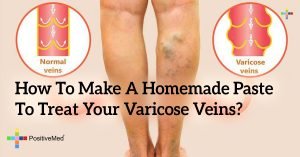
Psoriasis, a prevalent dermatological condition affecting 125 million globally, has long been associated with an elevated risk of cardiovascular events. Beyond the visible skin manifestations, researchers delve into the intricate connection between psoriasis and heart disease. This exploration focuses on Coronary Microvascular Dysfunction (CMD), aiming to unravel its role in amplifying cardiovascular risks independent of traditional factors. Insights into CMD shed light on potential early interventions and targeted treatment plans.
Understanding Psoriasis and Cardiovascular Risk
- Beyond Skin Deep:
Psoriasis exhibits connections to cardiovascular disease beyond traditional risk factors.
The severity and extent of psoriasis correlate with an increased risk of heart attack, stroke, and mortality.
- Lifestyle and Immunologic Links:
Lifestyle, genetic, and immunologic factors contribute to the intricate relationship.
Addressing underdiagnosed and undertreated cardiovascular risk factors is pivotal in mediating the link.
Exploring Inflammation: Catalyst for Cardiovascular Risks
- Inflammatory Implications:
Inflammation associated with psoriasis is a driving force behind cardiovascular disease development.
Plaque formation and atherosclerosis, culminating in conditions like coronary artery disease, are influenced by psoriasis-related inflammation.
- Early Cardiovascular Risks:
Increased cardiovascular risk is observed before the onset of coronary artery disease in individuals with psoriasis.
Coronary microvascular dysfunction (CMD) emerges as a potential player in understanding this early risk.
Coronary Microvascular Dysfunction (CMD) Unveiled
- Intricacies of CMD:
CMD affects tiny blood vessels supplying the cardiac muscle, distinct from coronary artery disease.
Inflammation is a common factor in both CMD and coronary artery disease.
- Study Approach:
The study employs coronary flow reserve as a measure to detect CMD.
Unlike traditional methods, this approach offers insights into both coronary artery disease and CMD.
Coronary Flow Reserve: Decoding the Numbers
- Significance of Scores:
Coronary flow reserve measures the ability of coronary circulation to dilate during exertion.
Healthy scores range from 3 to 6, while scores of 2.5 or lower indicate CMD or coronary artery disease.
- Study Findings:
In a sample of 448 individuals with psoriasis, approximately 31% exhibit CMD without coronary artery disease.
Factors like age, BMI, hypertension, psoriatic arthritis, and psoriasis severity contribute to CMD risk.
Implications and Future Perspectives
- CMD and Cardiovascular Outcomes:
CMD’s prevalence in psoriasis patients contributes significantly to adverse cardiovascular outcomes.
Disease duration and severity directly correlate with CMD risk.
- Treatment Hypothesis:
Early and effective psoriasis treatment may restore CMD, potentially preventing future cardiovascular risks.
Reduced CMD levels observed with psoriasis treatment support this hypothesis.
Beyond Traditional Cardiovascular Risk Factors
- Unique Risk Profile:
CMD risk in psoriasis is not associated with conventional cardiovascular risk factors.
Smoking, blood fat levels, and type 2 diabetes show no significant correlation with CMD.
- Holistic Cardiovascular Assessment:
Ongoing research explores diverse methods, including coronary artery calcium scores, to refine cardiovascular risk assessment in psoriasis.
Centralized care coordination models exhibit promise in screening and managing traditional risk factors.
Inflammation as a Therapeutic Target
- Psoriasis Medications and Cardiovascular Risk:
Psoriasis drugs targeting inflammation may aid in reducing cardiovascular risks.
TNF inhibitors show promise, but a conclusive causal relationship is yet to be established.
- Comprehensive Disease Management:
Successful psoriasis symptom treatment contributes to risk reduction through various mechanisms.
In the intricate interplay between psoriasis and cardiovascular disease, the investigation into Coronary Microvascular Dysfunction emerges as a crucial chapter. Understanding the early role of CMD, untethered from conventional risk factors, offers a pathway for precise interventions and tailored treatment plans. The study’s implications stretch beyond dermatology, emphasizing the need for holistic cardiovascular assessments in psoriasis patients. As research unfolds, the potential of early and effective psoriasis management to reshape cardiovascular outcomes beckons, promising a future where personalized care stands as the cornerstone of health.





